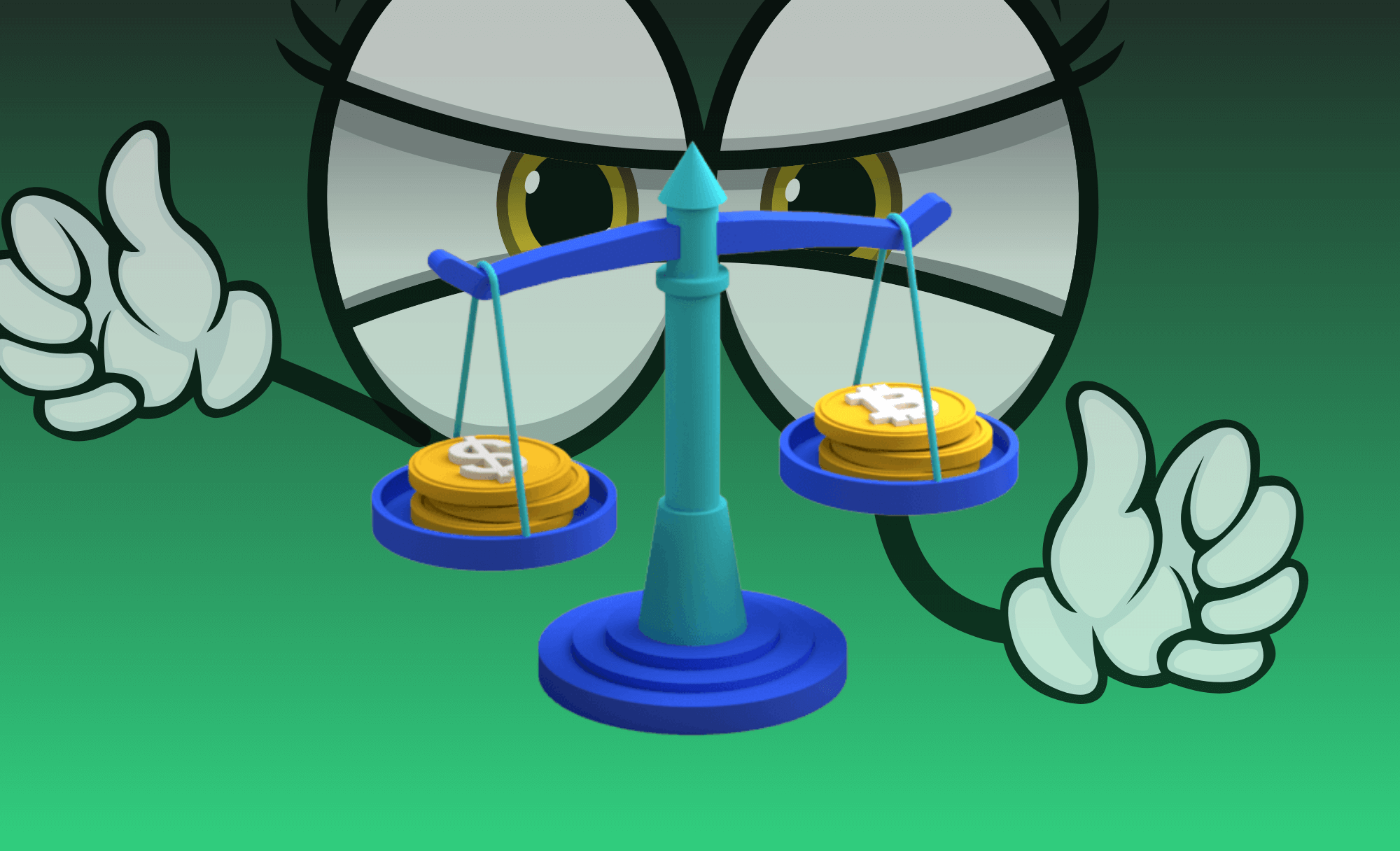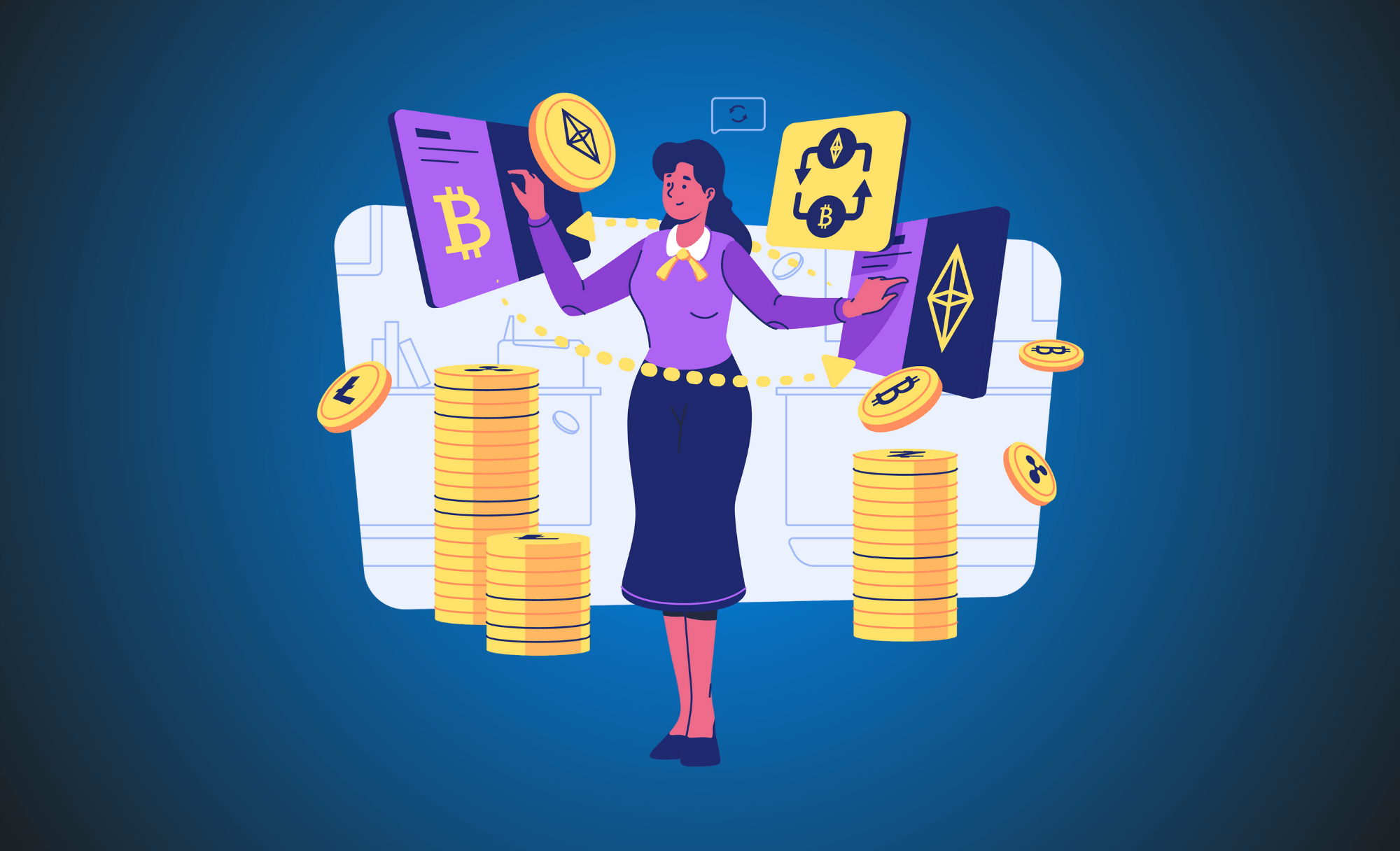Learn everything you need to know about the different classes of stablecoins, their benefits, and history!
A stablecoin is a cryptocurrency whose price is tied to an external asset. The primary advantage of this is that the price of the stablecoin does not follow the crypto market, and it has a better chance of resisting volatility (depending on what external asset it's tied to). For context, most cryptos are tied to the value of Bitcoin - which explains their wild price fluctuations even if a project is doing well.
There are three main types of stablecoins:
- Commodity-backed stablecoins are cryptocurrencies with a value that is pegged to one or more commodities that they can be physically redeemed for. An example of this is real estate, oil, or gold. They are backed by a promise to pay - by certain individuals, firms, and even regulated financial institutions.
- Cryptocurrency-backed stablecoins are cryptocurrencies with a value that is pegged to other cryptocurrencies. But isn't this the same as a normal crypto, which is tied to Bitcoin? Not quite. This class of stablecoins uses other cryptos as actual collateral for an exchange value. However, the danger of this is that the technical implementation is very complicated - and it's difficult to insure against a change in value due to how volatile the backing cryptos are. As a result, the collateral must be oversized to cover any problems.
- Fiat-backed stablecoins are cryptocurrencies with a value that is pegged to a fiat currency, usually the US dollar. This is the most common and stable class of stablecoins. In some cases, these coins are insured by an equivalent amount in the federal reserve and by regulated financial institutions.
Why were stablecoins created?
Stablecoins were originally created for the purpose of buying other cryptocurrencies. In the first few years after the inception of Bitcoin, many exchanges were being denied access to traditional banking. Fiat deposits were cut off without warning because traditional banks had deemed their relationship with crypto companies as "too risky." Without the bridge between crypto and fiat money, there was no other asset that was stable enough to A) hold its value and B) act as a universally-accepted form of payment to buy other cryptos.
Enter the stablecoin, which became widely-embraced across all exchanges as a reliable and quick way to handle transactions - anywhere, at anytime. The advent of stablecoins began to receive approval from regulators, and banks opened their doors to exchanges once again - wondering if crypto was here to stay.

What are the benefits of stablecoins?
Here are some of the biggest benefits of storing your money in stablecoins:
- Stablecoins can be used 24/7 and transfers can be received in a matter of seconds. Fiat money wire transfers can take several days to even weeks to execute, and must pass through a lengthy system of checks and balances to clear. Stablecoins do not require any human intervention, and instead use smart contracts to achieve lightning speed.
- Stablecoins can be sent anywhere in the world, and redeemed for the currency of that country. Fiat money is subject to national limits on how much currency you can take outside the country of origin - creating problems when it comes to moving and declaring large amounts of cash.
- Stablecoins don't suffer from foreign exchange rates. They're worth the same amount globally!
- Stablecoins are free from government interference with fiscal monetary policy - such as printing more money, or raising bank interest rates to drive inflation and deflation.
- Stablecoins can be sent from exchange to exchange to purchase cryptos. Fiat money cannot be transferred from one exchange to another - and if you deposit fiat money from a bank into a new exchange that you plan to use - this will incur a fee. Why not avoid it entirely?
- Stablecoins can store value indefinitely and won't incur any taxable events until they are converted back into fiat money. You can change your crypto into stablecoins, and stablecoins back into crypto - as many times as you want without being taxed on the conversion. This is so powerful because you can shift between different investments constantly, re-invest your profits, and transfer stablecoins to other exchanges to buy cryptos you wouldn't normally be able to get - all without getting taxed every time on your profits (which happens if you had to convert to fiat money).
What are the most popular stablecoins?
Tether (USDT) was the very first successful stablecoin, created in July of 2014 by Brock Pierce, Craig Sellars, and Reeve Collins. It is built upon Omni, a protocol layer for Bitcoin - and ERC-20, the most popular protocol for Ethereum. However, a huge controversy began in 2017 when Tether was found to share controlling interests with Bitfinex - another large exchange that could have benefitted from unfair advantages based on their partnership.
Later in 2018, Tether claimed that it was fully-backed by 1:1 deposits of US dollars held in various banks - but this was simply not true, as they were only 74% covered! Tether later revised their statement in 2019 to state, "Every tether is always 100% backed by our reserves, which include traditional currency and cash equivalents and, from time to time, may include other assets and receivables from loans made by Tether to third parties, which may include affiliated entities."
Despite the controversy, Tether's value has always remained close to 1 USD and even reached a high of 1.22 USD at one point. Today, it is the largest stablecoin by market cap with over 72B in circulation.
US Dollar Coin (USDC) is the second most popular fiat-collateralized stablecoin, founded in May of 2018 by a company called Circle. They later created a consortium that involved members from Coinbase and Bitmain to watch over and manage USDC. It is backed by fully-reserved assets, and can be exchanged on a 1:1 basis for US dollars.
Centre Consortium regularly publishes proof of their USDC reserves on their website, and these tests are conducted by Grant Thornton LLP. In March of 2021, Visa announced that USDC would be allowed to settle payments on their network - bringing about a renewed stroke of confidence in stablecoins that had been left in shambles by Tether.
Today, USDC is known as one of the safest and most transparent stablecoins with over 42.5B in circulation. It is for this reason that Finblox has chosen USDC as the flagship saving vehicle of choice.

Where can I buy stablecoins?
You can purchase stablecoins on virtually any centralized exchange using fiat money, and also trade your cryptos for their equivalent value in stablecoins. Some lesser-known stablecoins can actually be mined - while there are other stablecoins that you can stake and receive rewards on!
The Takeaway:
Ultimately, stablecoins act as the bridge between the crypto and fiat world. We can neither hope to fully eliminate cryptocurrencies, nor can crypto survive without the existence of fiat money. For the technologically-savvy investor that knows how to navigate the best of both worlds, stablecoins represent the easiest way to move funds anywhere around the world at anytime - without worrying about taxes.
Thanks for reading! Please subscribe if you haven't already - and stay tuned for our next article on everything you need to know about altcoins and meme coins!
This content is provided for informational purposes only, and should not be relied upon as legal, business, investment, or tax advice. You should consult your own advisers as to those matters. Charts, graphs and references to any digital assets are for informational and illustrative purposes only.


